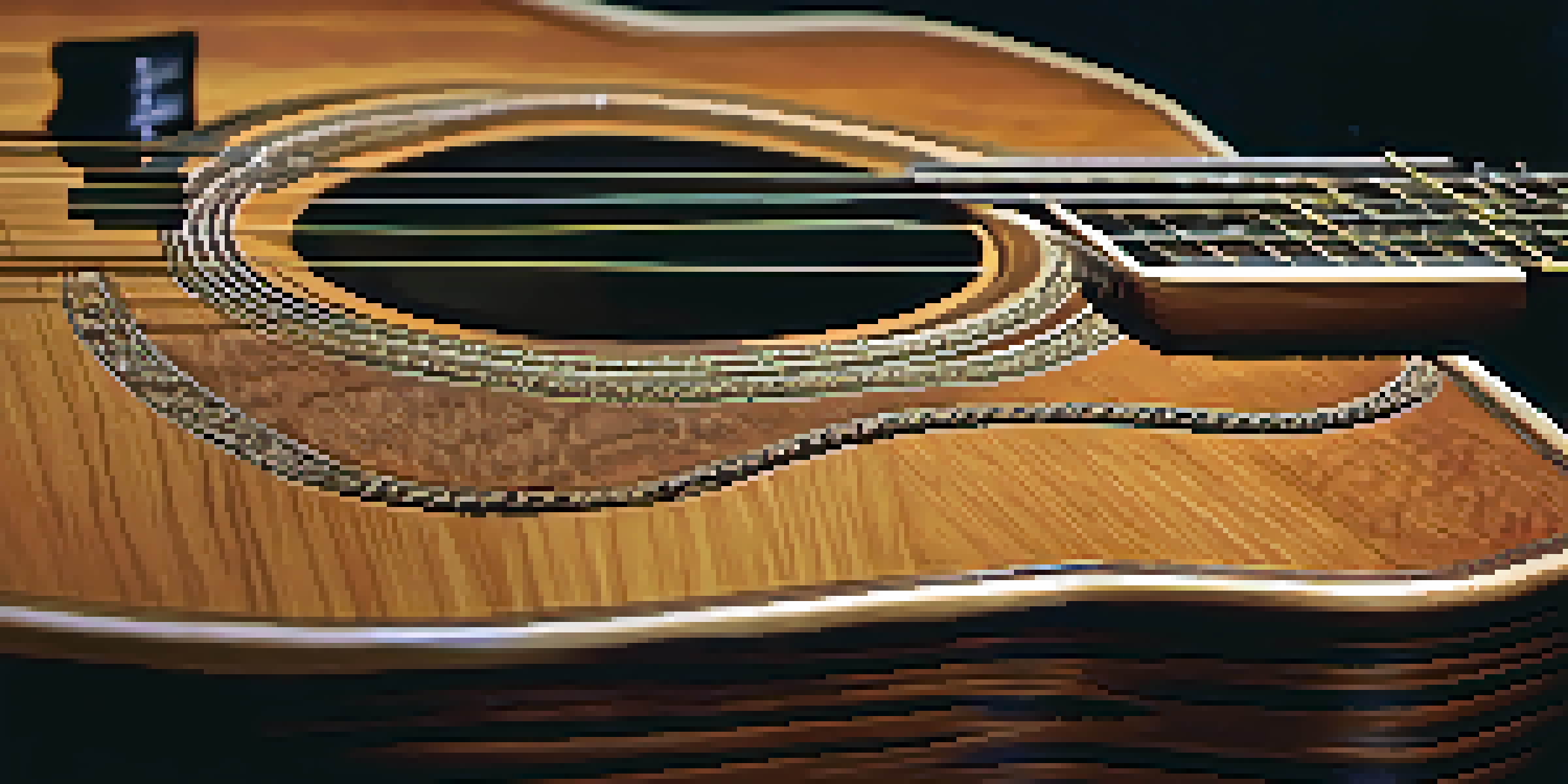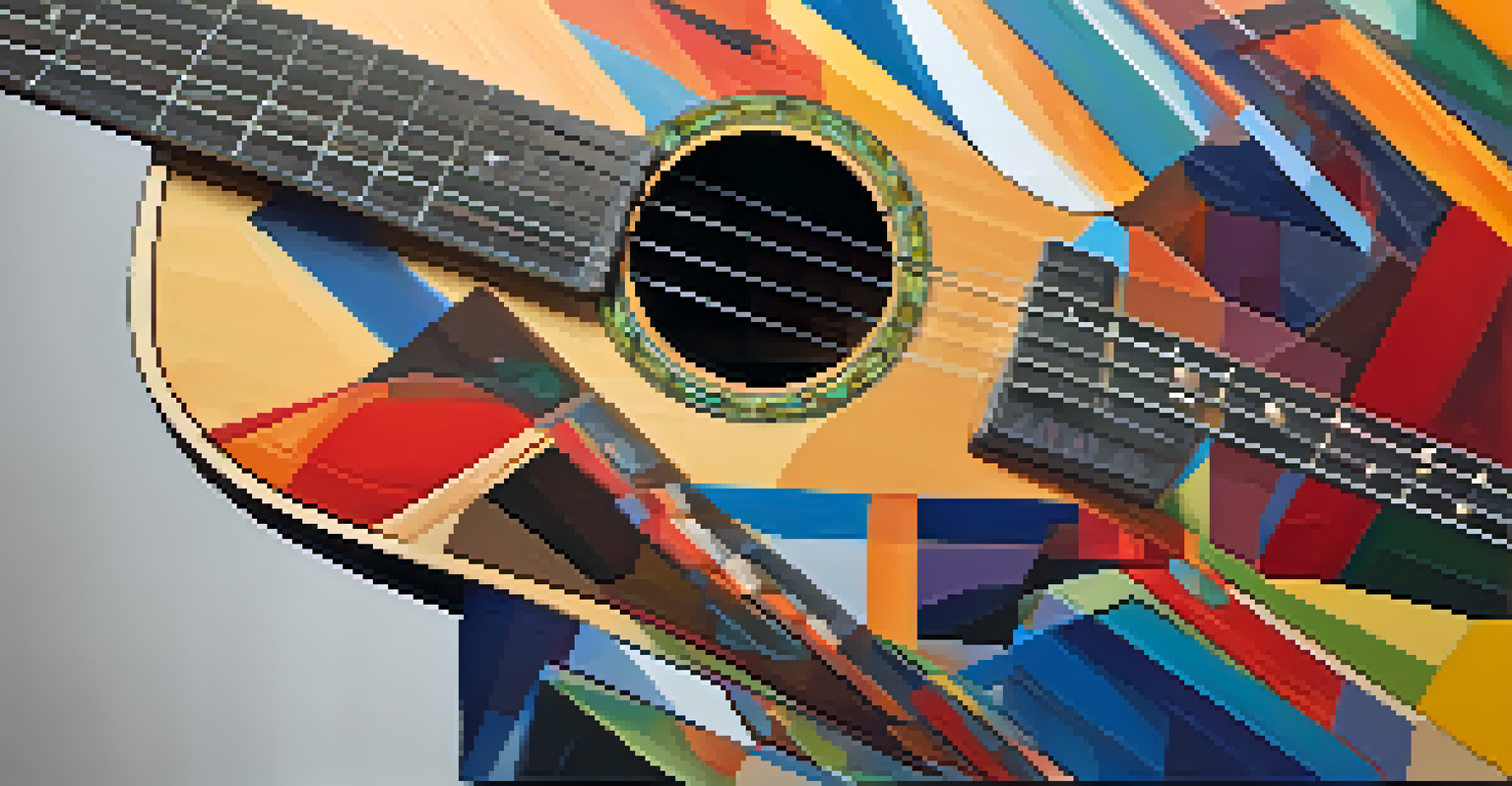The Rise of Multi-Scale Guitars: Benefits and Design

Understanding Multi-Scale Guitars: What Are They?
Multi-scale guitars, also known as fanned-fret guitars, feature a unique design where the frets are angled rather than parallel. This allows each string to have a different scale length, which means the bass strings are longer than the treble strings. The concept may sound complex at first, but it simply means that the guitar is designed to enhance playability and tone across the fretboard.
Every guitarist knows that the instrument is an extension of their individuality. Multi-scale guitars allow players to express themselves in ways that traditional designs simply can't.
This design has roots in the need for better intonation and string tension, especially for players who utilize lower tunings. By allowing each string to vibrate at its optimal length, multi-scale guitars can produce clearer notes and improved harmonic balance. Musicians often liken it to how different instruments, like pianos and violins, are crafted to optimize their specific sound.
As guitarists explore various playing styles, the multi-scale design has gained traction, appealing to everyone from jazz players to metal enthusiasts. The unique look and feel of these guitars can also be quite striking, making them a popular choice not just for their sound, but for their visual appeal.
The Physics Behind Multi-Scale Guitars
At its core, the multi-scale guitar takes advantage of basic physics principles, particularly the relationship between string length and pitch. Longer strings produce lower pitches, while shorter strings yield higher pitches. By designing the guitar with varying string lengths, players can achieve a more balanced tonal range that is both rich and resonant.

This design also addresses the common challenge of achieving consistent tension across all strings, especially when tuned to lower notes. With traditional guitars, players often face issues like floppy bass strings or overly tight treble strings. Multi-scale guitars provide a solution by allowing each string to maintain optimal tension, regardless of tuning.
Enhanced Playability and Tone
Multi-scale guitars feature angled frets that optimize string lengths, improving playability and producing clearer tones.
Moreover, this setup can reduce the fatigue that players often experience during long sessions. The ergonomic nature of multi-scale guitars allows for a more natural hand position, reducing strain and enhancing comfort, which is crucial for both amateur and professional musicians.
Benefits of Playing Multi-Scale Guitars
One of the standout benefits of multi-scale guitars is improved intonation. This means that notes played on different frets sound more in-tune compared to traditional guitars. For musicians who perform with others or record in the studio, this precision can make all the difference in achieving a polished sound.
Innovation in guitar design, like the multi-scale concept, opens up a world of possibilities for musicians to explore new sounds and techniques.
Another advantage lies in the tonal variety that multi-scale guitars offer. The unique string lengths can produce a wider range of tones, allowing guitarists to explore new genres and techniques. From powerful riffs in rock to delicate fingerpicking in folk, the versatility is a huge draw.
Lastly, many players report that multi-scale guitars enhance their overall playing experience. With the combination of better ergonomics, improved sound quality, and a broader tonal palette, it's no wonder that more musicians are embracing this innovative design.
Design Considerations for Multi-Scale Guitars
When it comes to designing multi-scale guitars, there are several factors to consider. The most significant is the fan angle, which determines how much the frets are angled. This can vary based on the player's preferences and playing style, making it a highly customizable feature.
Additionally, the materials used in construction play a crucial role in the guitar's overall sound and feel. Luthiers often experiment with different woods and hardware to find the perfect balance that complements the multi-scale design. This attention to detail can lead to unique instruments that truly stand out.
Versatile Musical Applications
These guitars appeal to a wide range of musicians, from metal players to jazz guitarists, thanks to their ability to deliver a broad tonal palette.
Lastly, aesthetics shouldn't be overlooked. Multi-scale guitars can come in a variety of shapes, colors, and finishes, allowing musicians to express their personality through their instrument. As more players seek individuality in their gear, the design possibilities for multi-scale guitars continue to expand.
Who Is Embracing Multi-Scale Guitars?
The rise of multi-scale guitars has attracted a diverse range of musicians. While they originated in the metal and progressive rock scenes, players from various genres are discovering their benefits. Jazz guitarists, classical musicians, and even singer-songwriters are experimenting with these instruments.
Notably, many renowned guitarists have begun to incorporate multi-scale guitars into their setups, showcasing their versatility. Artists often share their experiences through social media and live performances, inspiring others to explore this innovative design. As a result, the multi-scale guitar community is growing steadily.
This trend isn't just about the instruments themselves; it reflects a broader shift in how musicians are approaching creativity and expression. Players are no longer confined to traditional designs, and multi-scale guitars are opening doors to new possibilities in sound and technique.
Challenges with Multi-Scale Guitars
Despite their many benefits, multi-scale guitars aren't without challenges. One of the primary issues is the learning curve involved in adapting to the unique fret layout. For players accustomed to traditional guitars, it may take time to adjust to the angled frets and varying string lengths.
Another challenge is the availability and cost of multi-scale guitars. While they are becoming more popular, they can still be harder to find compared to standard guitars. Additionally, due to their specialized design, they often come with a higher price tag, which might deter some potential buyers.
Growing Popularity and Accessibility
As more manufacturers produce multi-scale guitars, their availability and affordability are increasing, inviting more musicians to explore their unique benefits.
However, as more manufacturers embrace this design, we can expect to see a wider range of options at various price points. Over time, this could make multi-scale guitars more accessible to a broader audience, allowing even more musicians to experience their unique advantages.
The Future of Multi-Scale Guitars
Looking ahead, the future of multi-scale guitars appears bright. As innovation continues in the music industry, we can expect to see further advancements in materials, design, and technology. This could lead to even more comfortable, versatile, and visually stunning instruments that appeal to a wide range of players.
Moreover, as educational resources become more accessible, more musicians will learn about the benefits of multi-scale guitars. Online tutorials, videos, and forums are paving the way for players to explore this design without the intimidation that once surrounded it. This growing knowledge base is likely to encourage experimentation and creativity.

Ultimately, multi-scale guitars represent a shift in how we think about guitar design and function. As musicians continue to push boundaries, these instruments will likely play a pivotal role in shaping the sound of future music.